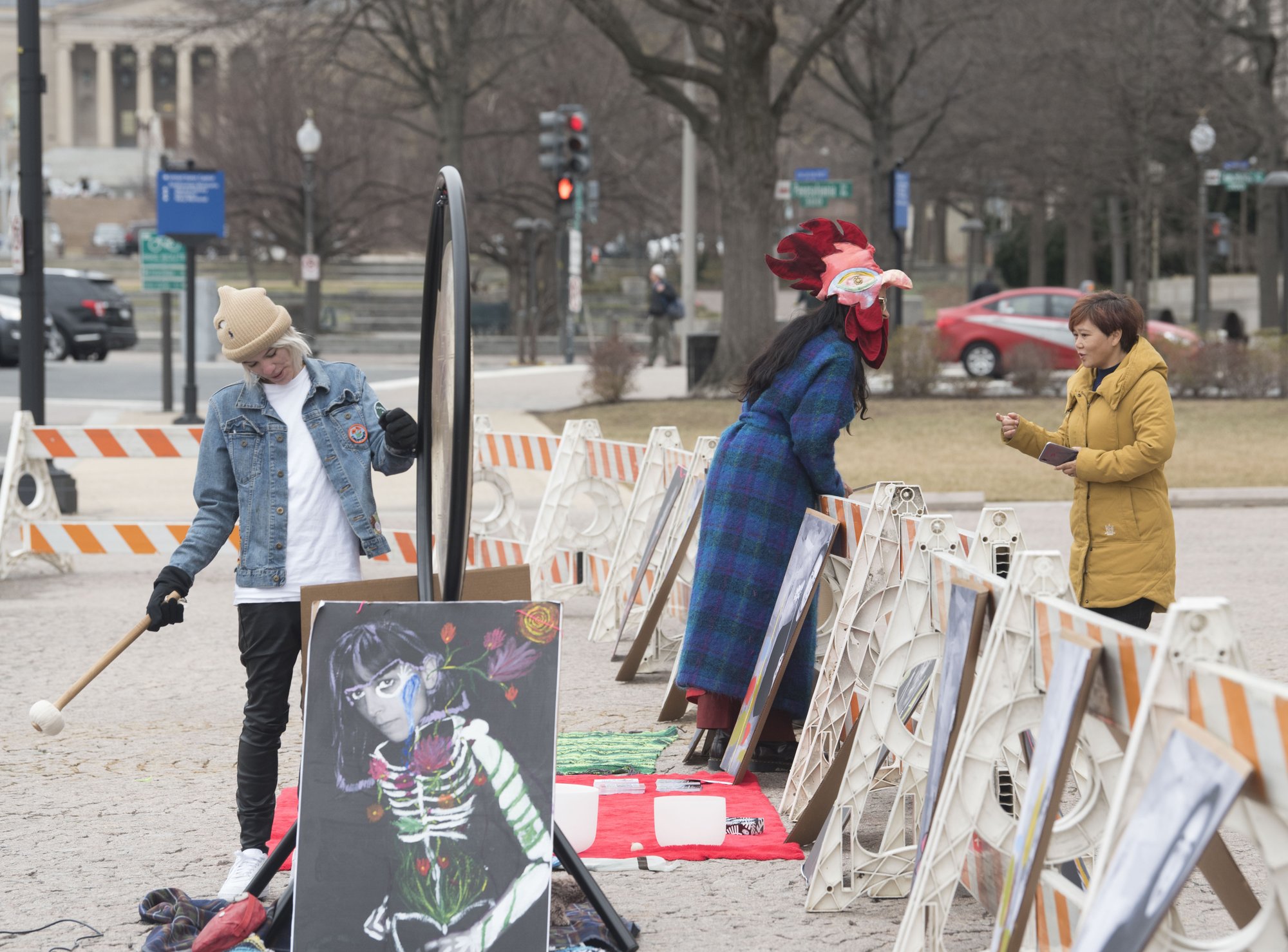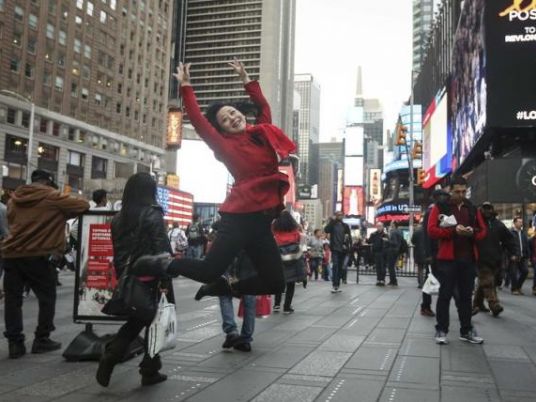In cosmopolitan Cairo, where all the commotion drives you wild and the traffic is boisterous, two artists display the richness of cultures and the tranquility of the countryside to Zamalek’s Art Corner Gallery.
Souad Franca, a Libyan artist who has spent more than half of her life in Egypt, seeks to illustrate both cultures in her artwork using a truly vibrant pallet. Waleed El Guindy participates in this bilateral exhibition with pyrography (designs scorched on leather) suffused with images of the rural Egypt’s simplicity.
Orientalism runs through the exhibition, together in Franca’s boldly colored paintings of the falaha (peasant woman), the traditional bakery and the narrow alleys of Cairo, and in El Guindy’s prints of the typical rural family both in youth and old age.
Franca is a doctor by profession, yet an artist at heart. For someone who specialized in microbiology, Franca is surprisingly proficient at transferring a macro-culture through her gripping set of portraits.
This scientist turned artist firmly believes that all medical doctors acquire a unique artistic sense. “All our studies of anatomy, and the science of autopsy inspires a great deal of creativity,” she reveals. “And so we all end up very artistic, as we are exposed to a lot of color, such as the blood’s bright red.” Naturally, it appears, Franca’s paintings are dominated by red, among other lively colors.
The power of Franca’s paintings does not lie in the visage of her subjects, but rather in the cultural features which garnish the composition. Very fond of Libyan and Egyptian folklore alike, the artist strives to divulge not their genetic make-up, but rather their cultural make-up. Garments, occupations and dispositions hang here on this petite gallery’s walls in Zamalek, telling stories of folkways she seems to adore.
“I’m a fan of anything folkloric,” confesses Franca. And Libyan attire is boldly prominent at this Art Corner. A woman dresses in an orange dress, covers her hair in a reddish veil, and is bombarded with white and yellow jewelry. Looking a little overwhelmed from all the extra weight dangling from her ears, this lady is dressed in one style of many conventional Libyan garments. “I picked this outfit out of 450 custom Libyan outfits,” she says.
Another portrait shows the cooking of couscous, a traditional Libyan dish.
But Franca also finds Egyptian culture quite intoxicating. A painting shows the Eresoos man, who serves a sugary licorice drink popular among lower-class Egyptians. In the background is a group of men dressed in galabyas, also brightly painted blue and yellow.
Franca takes pleasure in painting portraits, because they each tell a story. And to contrast with the relentlessly colorful canvases, she sometimes chooses to tell such stories in black and white.
“By using black and white, the artist can transfer so much sentiment through the painting,” she says. “But this is so much harder than using color, because you can only tell your story through black, white, and shades of grey.”
In black and white are two portraits, one of a seemingly brooding man drinking his cup of tea, and a woman’s face behind her yashmak. While the color-infused portraits hold a forceful energy and a sense of playfulness, these monochromatic paintings invite you to stop, and ponder. Nonetheless, the black and white canvasses are equally compelling.
Also compelling are Waleed El Guindy’s leather prints. Inspired by the rural milieu, El Guindy tells stories of underprivileged families through portraying the old man, the boy, the girl, the sheep, the cat, the fisherman and his fish.
“I am captivated by rural characters,” says El Guindy. Born in Alexandria and educated in Cairo, the artist has fully experienced city life, both in its serenity and bustle. Yet inhabitants of the wholly peaceful countryside are El Guindy’s subject matter of choice.
Pyrography is an elaborate technique, challenging in process yet charming in outcome. “I start by designing a sketch, which is then burned on the leather material,” explains El Guindy. This technique has long been practiced by Egyptians, as well as other cultures.
Disparities do exist among El Guindy’s work, and only a few pieces are strong enough to contest Franca’s vibrant paintings. While a cat and a couple of sheep appear on the walls, to no particular affection, a few pieces simply captivate you.
A close up of an old man rests on the wall, his artfully wrinkled face covered partially with one hand, which is also undeniably wrinkled. One tiny eye looks back at you, silently screaming out tales of this man’s sorrows. Even though his lips are very slightly curled up in a smile, it is only a cynical smirk, rendering you all the more desperate to learn more about him.
“I was trying to illustrate misery and hardship,” reveals El Guindy. “I love this man’s wrinkles, because they add so much texture to the piece.”
If your eyes are craving a heavy dose of bright, untainted color, or if you alternatively seek some peaceful monochrome, catch this joint exhibition at the Art Corner Gallery in Zamalek until 11 August.




